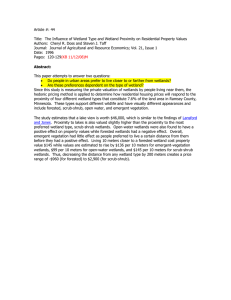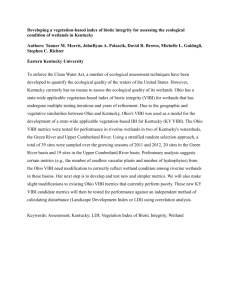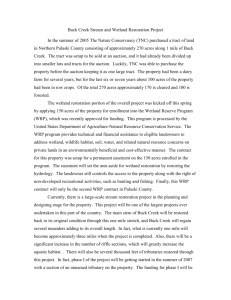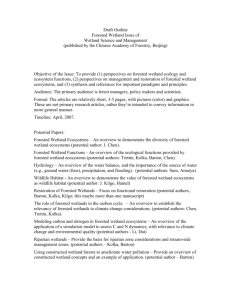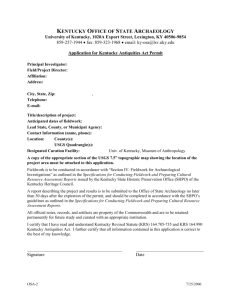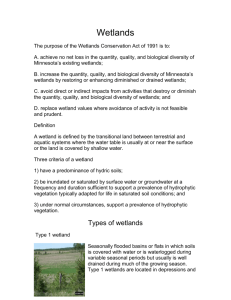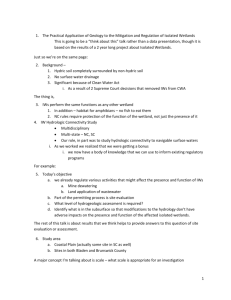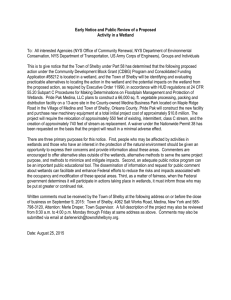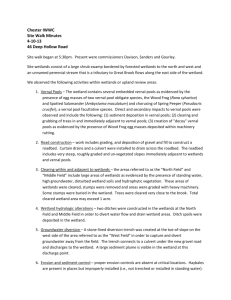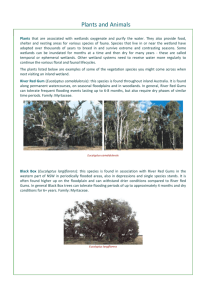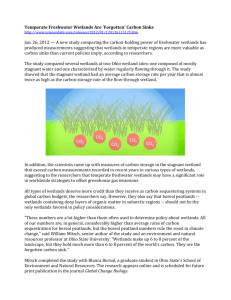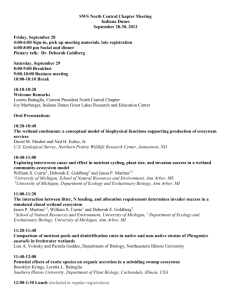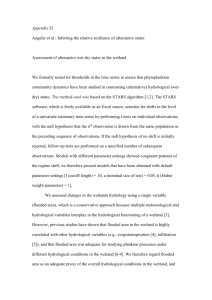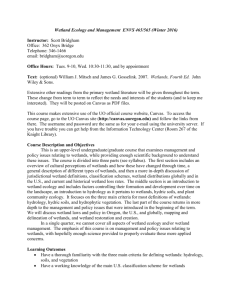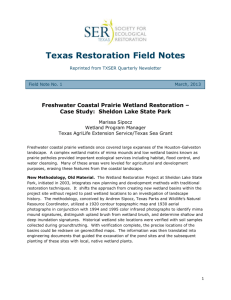Ambient Wetland Monitoring in Kentucky s Green and Upper
advertisement
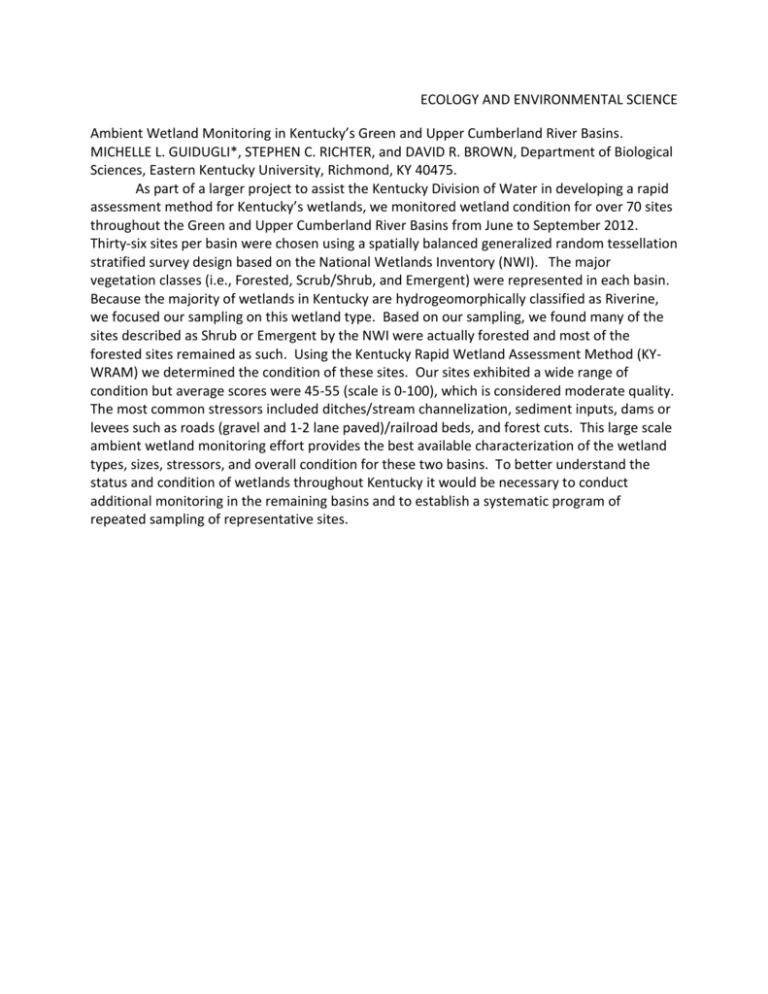
ECOLOGY AND ENVIRONMENTAL SCIENCE Ambient Wetland Monitoring in Kentucky’s Green and Upper Cumberland River Basins. MICHELLE L. GUIDUGLI*, STEPHEN C. RICHTER, and DAVID R. BROWN, Department of Biological Sciences, Eastern Kentucky University, Richmond, KY 40475. As part of a larger project to assist the Kentucky Division of Water in developing a rapid assessment method for Kentucky’s wetlands, we monitored wetland condition for over 70 sites throughout the Green and Upper Cumberland River Basins from June to September 2012. Thirty-six sites per basin were chosen using a spatially balanced generalized random tessellation stratified survey design based on the National Wetlands Inventory (NWI). The major vegetation classes (i.e., Forested, Scrub/Shrub, and Emergent) were represented in each basin. Because the majority of wetlands in Kentucky are hydrogeomorphically classified as Riverine, we focused our sampling on this wetland type. Based on our sampling, we found many of the sites described as Shrub or Emergent by the NWI were actually forested and most of the forested sites remained as such. Using the Kentucky Rapid Wetland Assessment Method (KYWRAM) we determined the condition of these sites. Our sites exhibited a wide range of condition but average scores were 45-55 (scale is 0-100), which is considered moderate quality. The most common stressors included ditches/stream channelization, sediment inputs, dams or levees such as roads (gravel and 1-2 lane paved)/railroad beds, and forest cuts. This large scale ambient wetland monitoring effort provides the best available characterization of the wetland types, sizes, stressors, and overall condition for these two basins. To better understand the status and condition of wetlands throughout Kentucky it would be necessary to conduct additional monitoring in the remaining basins and to establish a systematic program of repeated sampling of representative sites.
